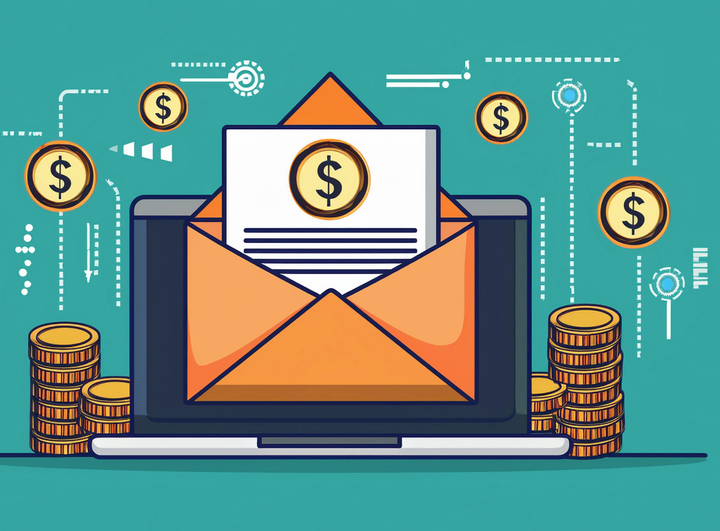Transactional vs Promotional Emails: Understanding the Distinction

Understanding the nuances between transactional and marketing emails is paramount in digital communication. In a world where email plays an increasingly pivotal role, grasping the distinctions between these two types of correspondence is essential for effective outreach.
Transactional emails serve a specific purpose, delivering crucial information based on user interactions, such as order confirmations, password resets, and receipts. In contrast, marketing emails are strategically designed to entice recipients to take actions that benefit the sender, such as purchasing or subscribing to a newsletter.
This difference in purpose and focus between transactional and marketing emails has a significant impact on how they are crafted, timed, and delivered. Let’s delve deeper into these critical disparities and their implications.
Understanding Transactional Emails
Definition and Purpose
Transactional emails play a vital role in digital communication, with their significance backed by compelling statistics. These emails are purpose-built to respond to user-initiated actions within an application or website. They serve as a vital source of information, delivering essential details relevant to user interactions and transactions.
Transactional emails boast remarkable open rates, often reaching an impressive 80-85%, a stark contrast to the 20-25% open rates typically seen in marketing emails. Their core purpose is to provide recipients with precisely the information they need, whether it’s an order confirmation, shipping notification, password reset, account verification, or a receipt.
Ensuring that transactional emails are well-structured, concise, and devoid of any marketing content, as this clarity prevents potential confusion and safeguards against deliverability issues. These statistics underscore the pivotal role of transactional emails in user engagement and communication.
Examples of Transactional Emails
- Order Confirmation Emails: Sent immediately after a transaction is completed, these emails provide users with detailed information about their purchase.
- Shipping Notifications: These emails inform users about the status of their orders, including tracking information.
- Password Reset Emails: Triggered when users initiate a password reset, these emails guide them through the process.
- Account Verification Emails: These emails verify users’ identities, confirming their registration or account activation.
- Receipts: Receipt emails summarize financial transactions, ensuring transparency and record-keeping.
Characteristics of Transactional Emails
Transactional emails are characterized by the following:
- Clarity and Conciseness: They convey information clearly and succinctly.
- Instant Triggering: They are triggered promptly in response to specific user actions.
- Non-Promotional Nature: They typically need more marketing content to maintain their primary focus on user needs.
These key characteristics ensure that transactional emails effectively meet their primary objective of providing essential, relevant information to recipients.
Understanding Marketing Emails
Definition and Purpose
Marketing emails emerge as a strategic asset for businesses, allowing them to connect with their intended audience effectively. These emails are carefully designed to showcase products, services, events, or initiatives to engage their recipients actively. Marketing emails are typically dispatched to individuals acquired through lead generation endeavors or those who have willingly subscribed to receive such content.
The compelling statistic that underlines their importance is the average open rate, which ranges from 20-25%. This statistic serves as a metric for the level of engagement that marketing emails can achieve. Their core objective is prompting recipients to take specific actions, whether purchasing, registering for webinars, subscribing to newsletters, or visiting websites.
The potency of marketing emails lies in their ability to seamlessly blend informative content with persuasive elements, incorporating visually appealing graphics, well-crafted copy, and clear calls to action. These emails often carry a personal touch, reaching out to recipients by name and tailoring the content to align with their interests or previous interactions with the brand. This strategic combination positions marketing emails as powerful tools in the arsenal of modern communication and marketing efforts.
Examples of Marketing Emails
- Newsletters: Periodic updates and insights shared with subscribers.
- Promotional Offers: Emails featuring discounts, sales, or special offers.
- Product Announcements: Introducing new products or services to the audience.
- Abandoned Cart Emails: Encouraging users to complete abandoned purchases.
- Re-engagement Emails: Reconnecting with inactive subscribers.
- Cross-Sell and Upsell Emails: Promoting related or upgraded products.
- Event Invitations: Inviting recipients to participate in events, webinars, or conferences.
Characteristics of Marketing Emails
Marketing emails are characterized by:
- Persuasive Content: They use persuasive language, visuals, and calls to action to drive conversions and engagement.
- Personalization: Marketing emails leverage recipient preferences, demographics, and past interactions to tailor content.
- Segmentation: They are often segmented to maximize relevance and impact.
- Timing and Strategy: Marketing emails are strategically timed for optimal user engagement.
The unique characteristics of marketing emails distinguish them as tools for generating brand interest and encouraging user action, with a clear focus on conversion and engagement.
Key Differences
Purpose and Focus
Transactional and marketing emails serve distinct purposes in a communication strategy. Transactional emails are primarily user-centric, aiming to facilitate specific actions or transactions. These emails are triggered by user interactions, such as purchases or password resets, and focus on providing essential information for a smooth user experience.
In contrast, marketing emails are strategically designed to drive sales, conversions, or user engagement. They emphasize showcasing products, promotions, or events and encourage recipients to take action. While user experience matters, the primary goal of marketing emails is to drive conversions and valuable actions from the recipient.
Content and Personalization
Transactional emails typically deliver transaction-centric information, such as order summaries or account confirmations, with minimal promotional elements. Personalizing transactional emails is relatively straightforward, as the customer provides the required data.
In contrast, marketing emails leverage personalization extensively. They consider recipient preferences, past interactions, demographics, and browsing behaviors to deliver content tailored to individual recipients. While this requires more effort, it enhances user engagement and conversion rates.
Frequency and Timing
Timing and frequency are vital considerations for both types of emails. Transactional emails are triggered instantly based on specific user actions, ensuring the timely delivery of crucial information. Failure to time or trigger transactional emails correctly can impact a brand’s reputation negatively.
In contrast, marketing emails are timed and strategized based on factors specific to the business, including user engagement patterns and optimal delivery slots. Planning and strategies significantly influence the open and click-through rates for marketing email campaigns.
Both transactional and marketing emails have their roles in a successful communication strategy, and understanding these fundamental differences enables businesses to tailor their email campaigns for optimal results.
Distinguishing Transactional from Promotional Emails
Analyzing Content and Timing
Distinguishing transactional from promotional emails involves analyzing their content and timing. Transactional emails are characterized by concise, factual, and user-centric content. They are sent immediately or shortly after a user-triggered action and aim to provide relevant information promptly.
In contrast, promotional emails exhibit more creative, persuasive, and brand-focused content. They follow a predefined schedule and are sent to a list of prospects or customers who have opted to receive marketing content. Understanding the content and timing differences is crucial to ensure that the correct type of email is sent for its intended purpose.
Legal and Ethical Considerations
The distinction between transactional and promotional emails holds legal and ethical significance. Transactional emails are not subject to the same opt-in and opt-out regulations as promotional emails, which require user consent before sending.
Mixing promotional content into transactional emails can lead to legal issues. Moreover, transactional emails often have higher open and click rates due to their relevance, and including unnecessary promotional elements may be seen as misleading. Therefore, businesses must adhere to ethical practices and legal requirements when categorizing and sending emails to avoid potential repercussions.
How to Improve Transactional and Marketing Emails
Best Practices for Each Type
Improving transactional and marketing emails involves following best practices specific to each type. For transactional emails, it’s essential to ensure they are timely, accurate, and helpful, providing users with the information they need. Using a clear and friendly tone and personalizing the email with the recipient’s details can enhance the user experience.
Marketing emails, on the other hand, should be relevant, engaging, and persuasive. Segmentation based on user preferences and behavior can tailor messages for maximum impact. Additionally, crafting compelling subject lines, headlines, and calls to action and ensuring mobile-friendly, responsive design are critical best practices for both types.
Design and Branding Considerations
Design and branding considerations play a significant role in enhancing the effectiveness of both transactional and marketing emails. Maintaining a consistent brand identity through recognizable sender names and addresses is crucial. For transactional emails, keeping the design minimal, mobile-friendly, and focusing on clarity ensures they serve their primary purpose effectively.
In marketing emails, a visually appealing design with engaging images, well-crafted copy, and clear calls to action is essential to captivate recipients and drive conversions. These considerations, coupled with A/B testing, analytics, and segmentation, help optimize email performance for both transactional and marketing emails.
Final Words
Mastering the nuances of transactional and marketing emails is not just an option; it’s a necessity. The distinction between these two types of emails is not merely technical; it’s a fundamental aspect of effective communication and email marketing strategies.
Understanding when and how to use transactional emails to facilitate specific actions and provide vital information while leveraging marketing emails to promote products, services, and brand engagement is a game-changer. It ensures that you’re delivering the right content to the right audience at the right time, enhancing user experiences, optimizing conversions, and ultimately boosting the success of your email campaigns.
Take advantage of the opportunity to harness the full potential of transactional and marketing emails in your email marketing strategies. Unlock the true potential of transactional emails in terms of ROI, open rate, and response with Maileroo.
Our robust platform, equipped with advanced features such as automation and real-time performance tracking, empowers businesses to harness the full capabilities of transactional emails. Elevate your email marketing strategy with Maileroo and experience the difference in engagement, conversion, and customer relationships.



